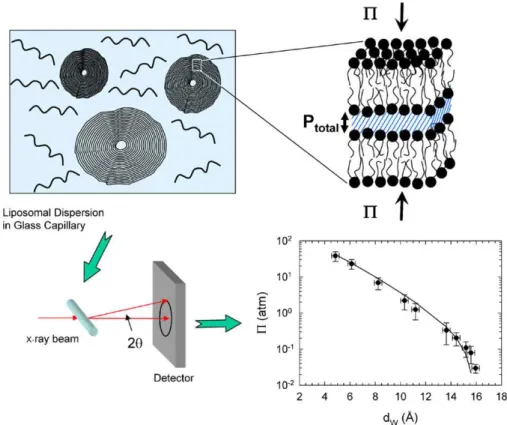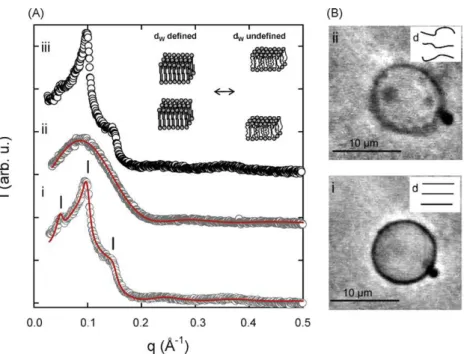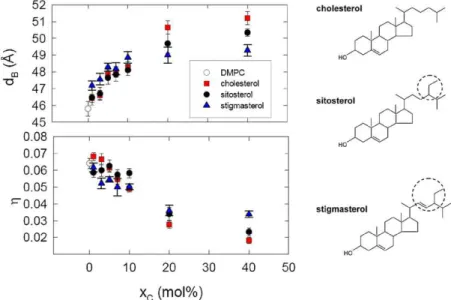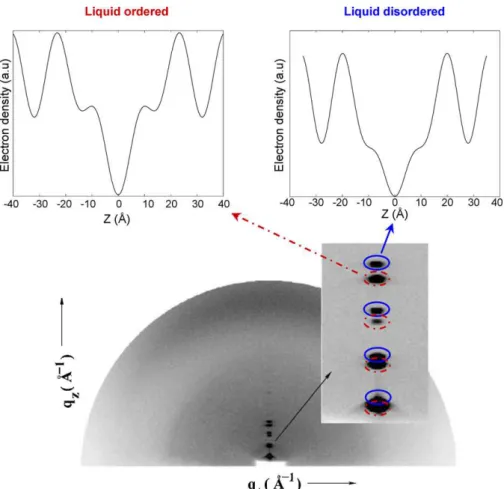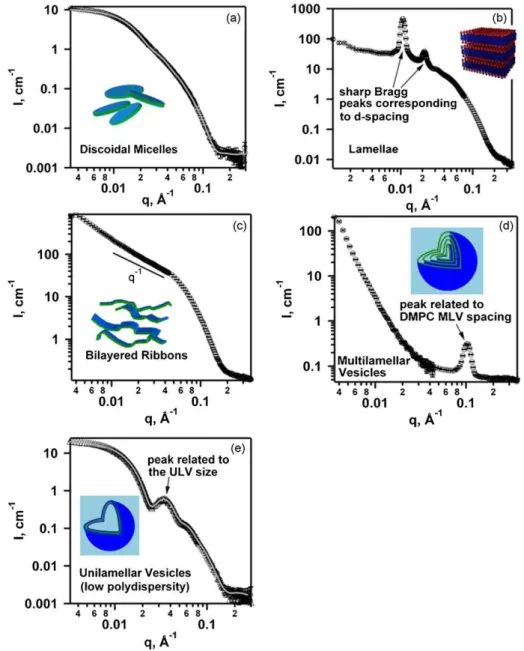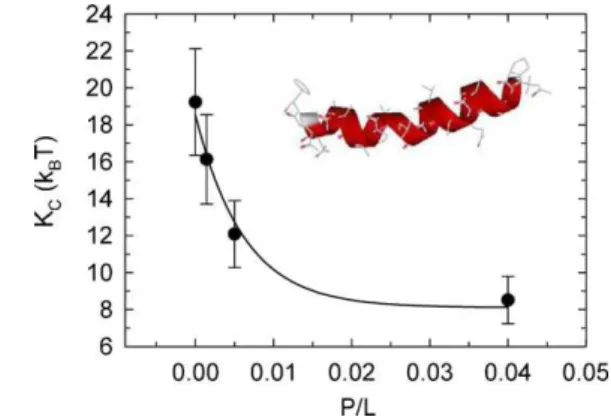Applications of Neutron and X-ray Scattering to the Study of Biologically Relevant Model Membranes
Texte intégral
Figure
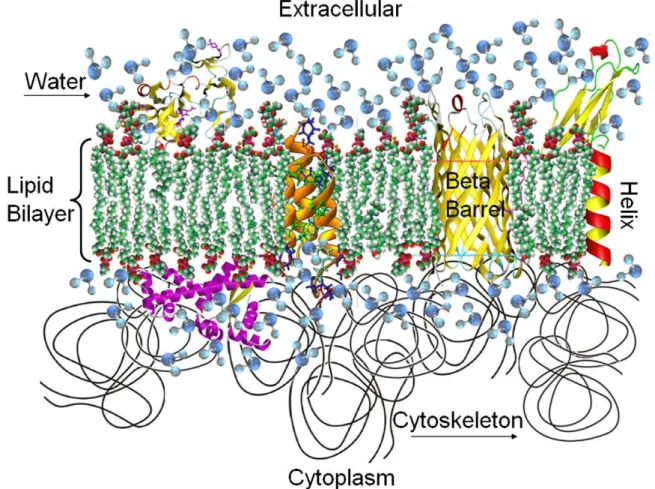



Documents relatifs
The essential parameters of superconducting magnets such as the maximum field, its homogeneity and sample access will be described from a technical and constructional
- The concentric shell model of the micelle with the radial scattering length density profiles expressed in 101° cm- 2.. Upper part : SANS, lower part : SAXS for a
To solve this discrepancy which might be essential to the interpretation of the observed energy gap at (001) in the 1-D phase by the Haldane conjecture, we
Another systematic deviation can been seen in figure 2a : the higher is the temperature, the steeper is the relaxation curve... I.-a) Time dependence of the density correlation
nanocrystalline bulk Co with an average crystallite size of D = 10 nm. We find that the variation of the radially averaged d ±∓ / d with the scattering vector and the applied
Study of the structure and dynamics of poly(vinyl pyrrolidone) by molecular dynamics simulations validated by quasielastic neutron scattering and x-ray diffraction
In the present experi- ments, since most of the measurements have been done at or near the X points [I101 and [OOl], where the structure factors for two out of three
An instrumental setup has been described which allows simultaneous photon absorption and neutron scattering experiments at low temperatures. A theore- tical account
